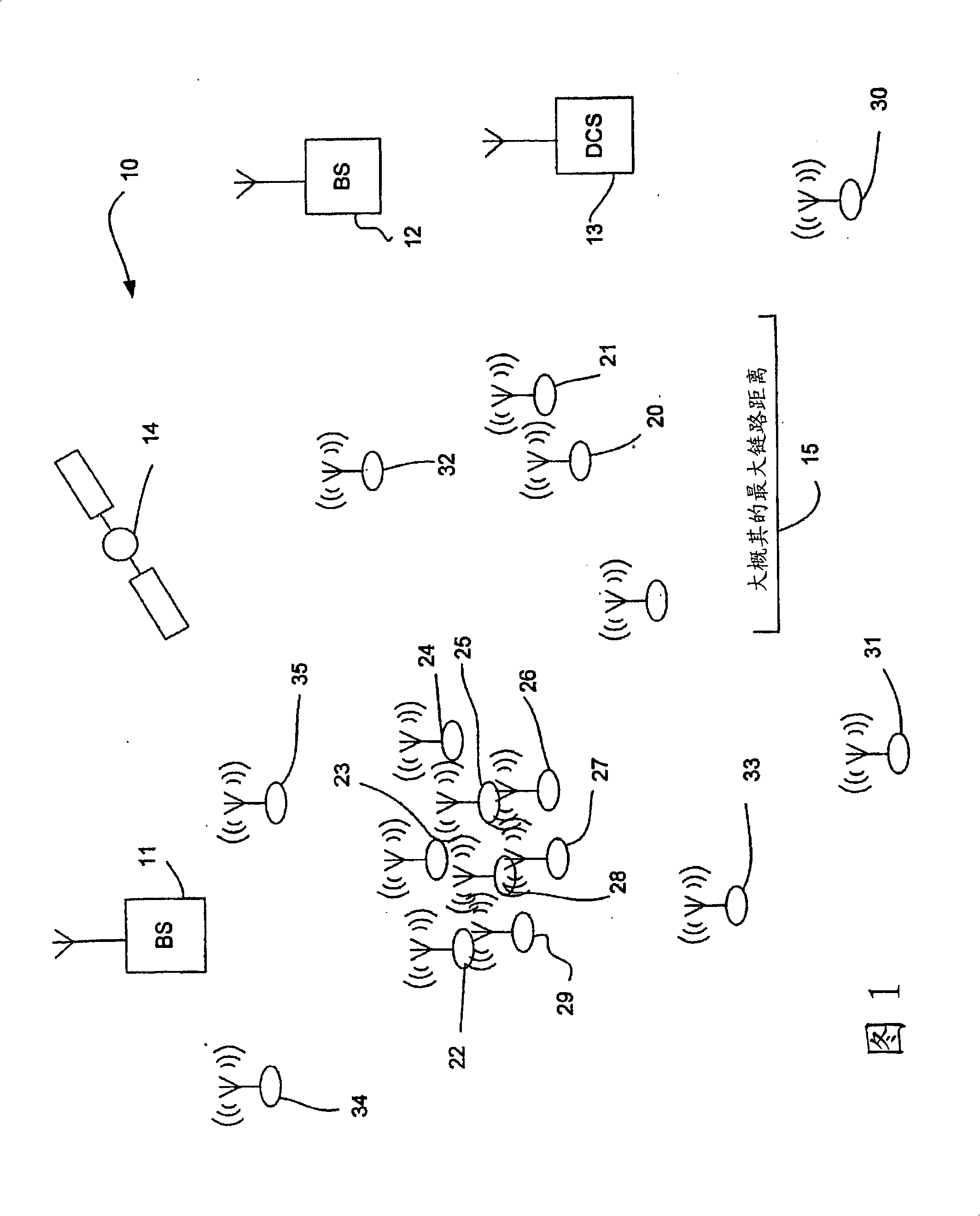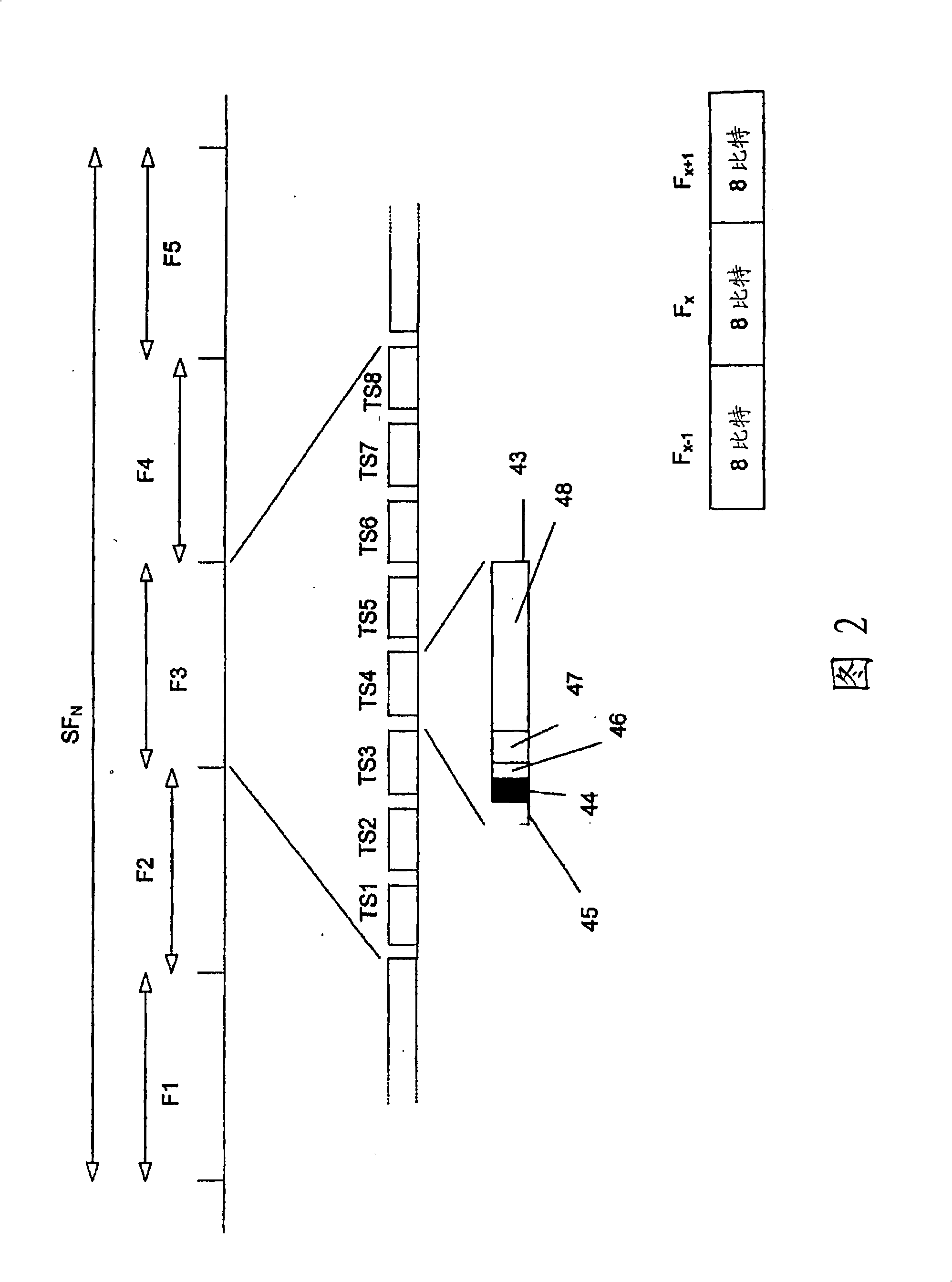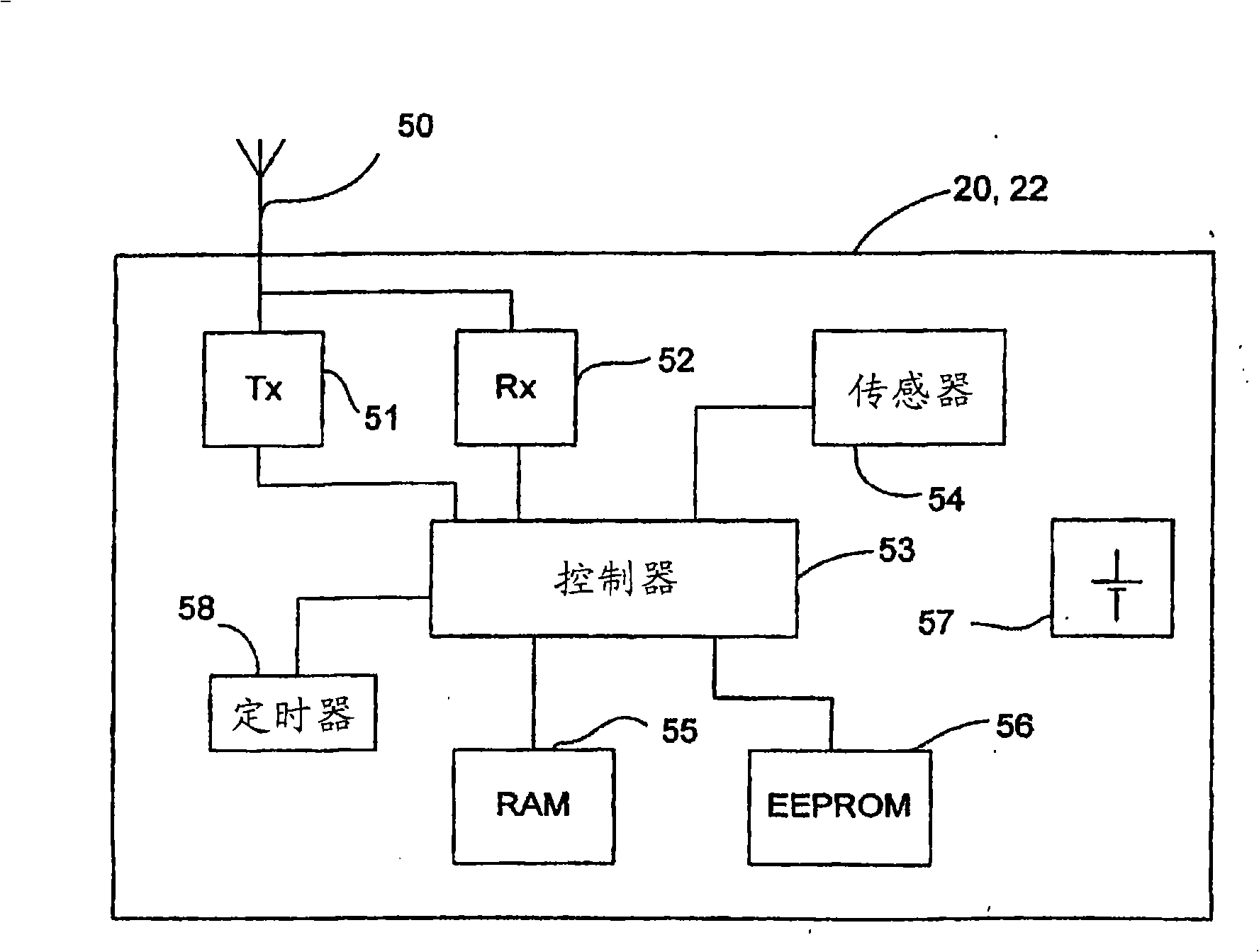Autonomous wireless networks
A wireless device and time slot technology, applied in network topology, wireless communication, data exchange network, etc., can solve the problems of reducing battery life, increasing power consumption, and sensitive to reliability of communication path links, and achieving low signaling overhead. Effect
- Summary
- Abstract
- Description
- Claims
- Application Information
AI Technical Summary
Problems solved by technology
Method used
Image
Examples
Embodiment Construction
[0033] Referring first to Figure 1, certain components of a system 10 are shown to facilitate understanding of the network topology. A plurality of base stations (in this embodiment a first base station 11 and a second base station 12 ) are operable to transmit data to a data collection station (DCS) 13 . In Figure 1, a communication satellite 14 is used to relay data from the base stations 11, 12 to the data collection station 13, but any other suitable two-way or omni-directional communication medium could be used. The base stations 11, 12 may eg be tethered or positioned on land so as to be located in a fixed position, they may also be free to move, eg free floating.
[0034] The system includes a plurality of freely movable or free-floating wireless devices, some of which are designated 20-35. For purposes of illustration, line 15 is used to show the distance over which devices are typically able to communicate, but this distance depends on many factors. Also, there is n...
PUM
 Login to View More
Login to View More Abstract
Description
Claims
Application Information
 Login to View More
Login to View More - R&D
- Intellectual Property
- Life Sciences
- Materials
- Tech Scout
- Unparalleled Data Quality
- Higher Quality Content
- 60% Fewer Hallucinations
Browse by: Latest US Patents, China's latest patents, Technical Efficacy Thesaurus, Application Domain, Technology Topic, Popular Technical Reports.
© 2025 PatSnap. All rights reserved.Legal|Privacy policy|Modern Slavery Act Transparency Statement|Sitemap|About US| Contact US: help@patsnap.com



